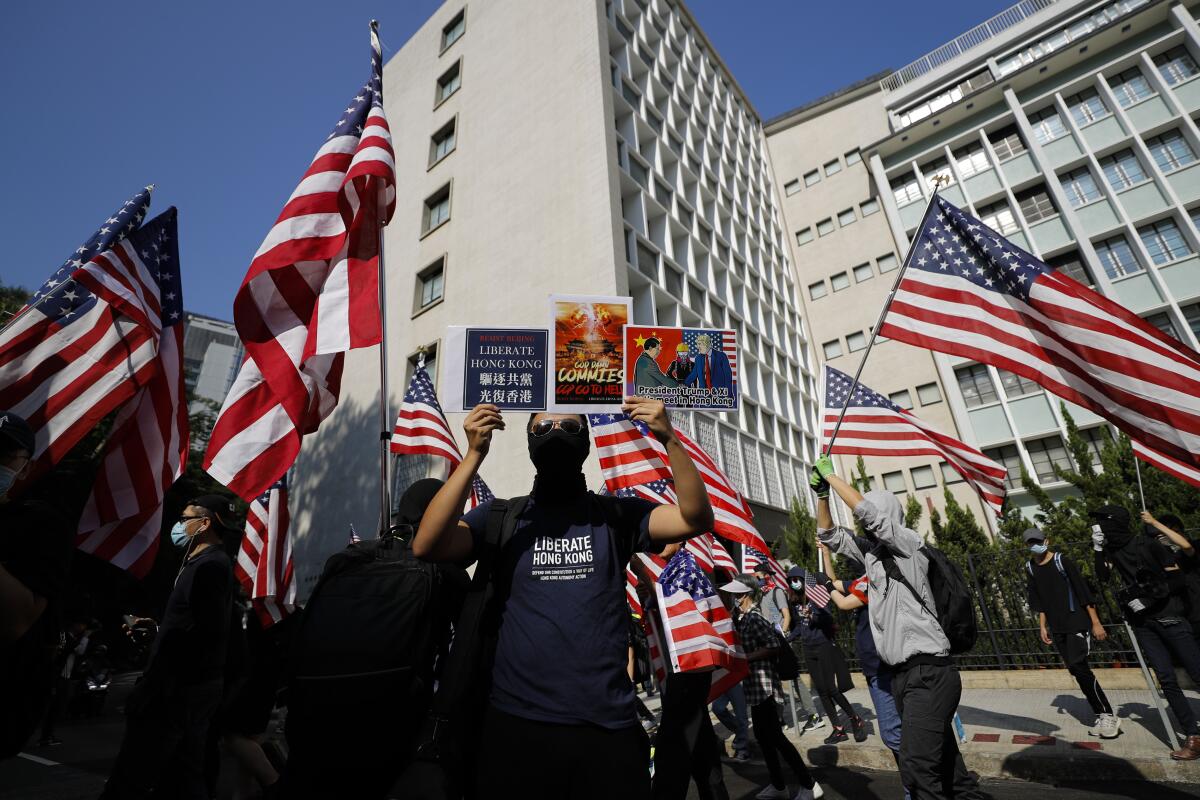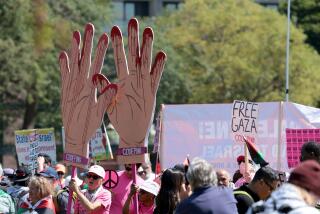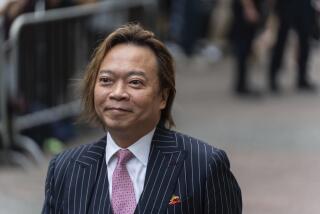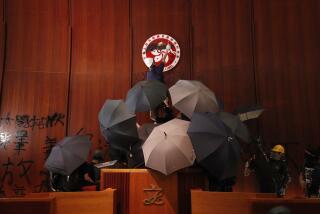Thousands march in Hong Kong to ratchet up pressure on government

HONG KONG — A huge crowd took to the streets of Hong Kong on Sunday, some driven back by tear gas, to demand more democracy and an investigation into the use of force to crack down on anti-government demonstrations, now in their sixth month.
Thousands turned out, including hardened young protesters in black outfits and face masks as well as parents with their children.
Marching near the waterfront on the Kowloon side of Victoria Harbor, they sought to keep the pressure on Chief Executive Carrie Lam after pro-democracy candidates won district council elections a week earlier.
“If we don’t walk out, the government will say it’s just a youth issue, but this is a Hong Kong problem that affects all of us,” Lily Chau said as she pushed her toddler in a stroller. “If we are scared, the government will continue to trample on our rights.”
Many held up a hand to indicate the five demands of the movement and shouted, “Five demands, not one less!” and “Disband the police force!”
Police in riot gear were out in force for the third march of the day — and the one where violence seemed most likely. They fired pepper spray and tear gas in some areas. Protesters dug up paving stones and threw them in the street to try to slow the police down.
Protests in the semiautonomous Chinese territory have been relatively peaceful during the two weeks around the Nov. 24 balloting but could turn violent again if the government doesn’t bend to the demands.
Lam has said she’ll accelerate dialogue but has not yielded any ground since the vote. Her government has accepted one demand — withdrawing extradition legislation that could have sent suspects to mainland China for trial — but not the others.
Elaine Wong, an office worker, called the recent elections an empty victory.
“We have in actual fact not won any concessions for our demands,” she said. “We must continue to stand out to remind the government of our unhappiness.”
Earlier marches Sunday appealed to President Trump for help and demanded that police stop using tear gas.
A group dressed in black and wearing masks carried American flags as it headed to the U.S. Consulate to express gratitude for legislation aimed at protecting human rights in Hong Kong that Trump signed into law last week.
Some held banners reading “President Trump, please liberate Hong Kong” and “Let’s make Hong Kong great again” — a riff on his 2016 campaign pledge to make America great again. One showed him standing atop a tank with “Trump” emblazoned on the front and side.
A peaceful crowd of about 200 adults and children marched to government headquarters in the morning and chanted, “No more tear gas.”
“A lot of parents are worried that their children are affected because their children are coughing, breaking out in rashes and so forth,” said march organizer Leo Kong, a 40-year-old social worker.
A third march was called for late afternoon in the Tsim Sha Tsui district near Hong Kong Polytechnic University, the site of the last fierce clashes with police two weeks ago.
Meanwhile, China accused the United Nations high commissioner for human rights, Michelle Bachelet, of emboldening “radical violence” in Hong Kong with her suggestion that the territory’s leader conduct an investigation into reports of excessive use of force by police.
Bachelet wrote in an opinion piece Saturday in the South China Morning Post that Lam’s government must prioritize “meaningful, inclusive” dialogue to resolve the crisis.
She urged Lam to hold an “independent and impartial judge-led investigation” into police conduct at protests. It has been one of the key demands of pro-democracy demonstrations that have roiled the territory since June.
China’s U.N. mission in Geneva said that Bachelet’s article interferes in Chinese internal affairs and exerts pressure on Hong Kong’s government and police, which “will only embolden the rioters to conduct more severe radical violence.”
It said that Bachelet made “inappropriate comments” on the situation in Hong Kong and that the Chinese side had lodged a strong protest in response.
Dake Kang of the Associated Press contributed to this report.
More to Read
Sign up for Essential California
The most important California stories and recommendations in your inbox every morning.
You may occasionally receive promotional content from the Los Angeles Times.










